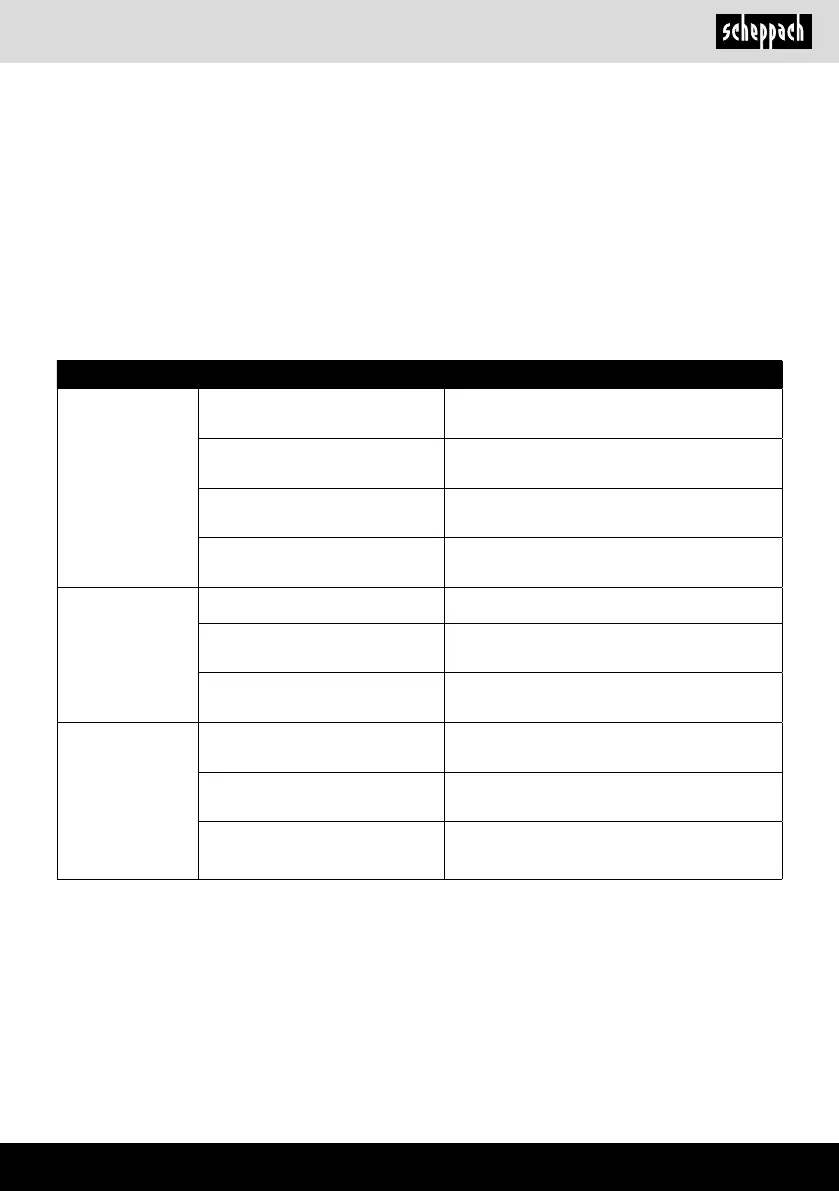www.scheppach.com
GB
|
29
These statements only apply to devices installed and sold in the countries of the European Union and which are
subject to the European Directive 2012/19/EU. In countries outside the European Union, different regulations
may apply to the disposal of waste electrical and electronic equipment.
You can nd out how to dispose of the disused device from your local authority or city administration.
Fuels and oils
• Before disposing of the unit, the fuel tank and the engine oil tank must be emptied!
• Fuel and engine oil do not belong in household waste or drains, but must be collected or disposed of separately!
• Empty oil and fuel tanks must be disposed of in an environmentally friendly manner.
12. Troubleshooting
Fault Possible cause Remedy
The compressor
does not start.
No supply voltage.
Check the supply voltage, the power plug and the
socket-outlet.
Insufcient supply voltage.
Make sure that the extension cable is not too long.
Use an extension cable with large enough wires.
Outside temperature is too low.
Never operate with an outside temperature of
below +5° C.
Motor is overheated.
Allow the motor to cool down. If necessary, remedy
the cause of the overheating.
The compressor
starts but there is
no pressure.
The non-return valve (17) leaks. Have a service center replace the non-return valve.
The seals are damaged.
Check the seals and have any damaged seals
replaced by a service center.
The drain plug for condensation
water (10) leaks.
Tighten the screw by hand. Check the seal on the
screw and replace if necessary.
The compressor
starts, pressure is
shown on the pres-
sure gauge, but the
tools do not start.
The hose connections have a leak.
Check the compressed air hose and tools and
replace if necessary.
A quick-lock coupling has a leak.
Check the quick-lock coupling and replace if
necessary.
Insufcient pressure set on the
pressure regulator (5.
Increase the set pressure with the pressure
regulator.
